The 15th
LaureatePainting
Bridget Riley
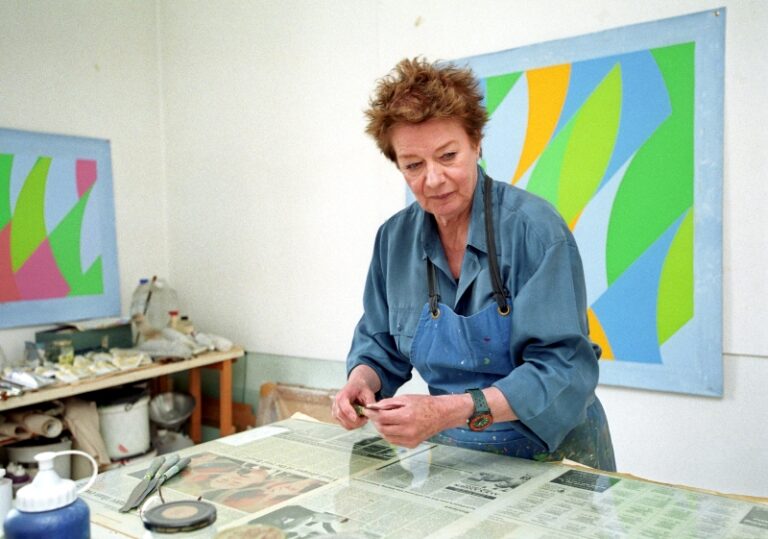
Bridget Riley is recognized and appreciated as an abstract optical painter,one of the finest exponents of Op Art,and her works have been described as visual analogues for states of mind,and even for pieces of music. She says that her inspiration came in large part from the French impressionists -their interest in perception,their own optics in nature and their idea of color and light -and Pointillism. She also credits the natural world she experienced as a child in Cornwell that made her visually aware and taught her the process and pleasure of observation. Her distinguished career encompasses forty years of uncompromising and remarkable innovation.
Biography
Bridget Riley is recognized and appreciated as an abstract optical painter,one of the finest exponents of Op Art,and her works have been described as visual analogues for states of mind,and even for pieces of music. She says that her inspiration came in large part from the French impressionists -their interest in perception,their own optics in nature and their idea of color and light -and Pointillism. She also credits the natural world she experienced as a child in Cornwall that made her visually aware and taught her the process and pleasure of observation,as well as her encounter with Pollock’s work in an exhibition at the Tate Gallery in 1956.
Riley first attracted critical attention with the black and white paintings she began to make in 1961. Her participation in The Museum of Modern Art’s 1965 exhibition "The Responsive Eye," Eestablished her position as an artist,and this was reinforced by the International Prize she won at the 1968 Venice Biennale. Throughout her career,she has investigated the role of color,and sought to express an abstract language for the relations of colors,and the impression of light in all its chromatic variety.
Her visit to Egypt in 1980 to 1981 resulted in a series of works drawn from the reconstructed palette of colors she discovered there. She had just finished seven years work on curves,and felt that she had exhausted what she could do in that direction,and that the colors she had been using were needed more intensity. She was impressed by the Egyptian colors that had been used against the desert for three thousand years. In 1986,however,her work took a new direction,and her recent wall-drawings weave intricate compositions based entirely on line.
Bridget Riley is respected both by her peers and by a younger generation of artists and students,and admired for her dedication to her artistic ideals. Her distinguished career encompasses forty years of uncompromising and remarkable innovation.
Recently,she has had a major solo exhibition at the Dia Center in New York (2002),and a retrospective exhibition at the Tate Britain,London (2003). In 1999 Riley was appointed a Companion of Honour. She has studios in London,Cornwall and Provence.
Chronology
Awarded the Praemium Imperiale Prize for Painting,Japan Art Association,Tokyo
-
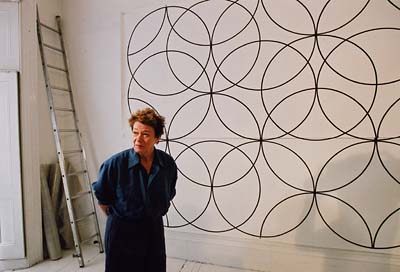
At her studio in London
-
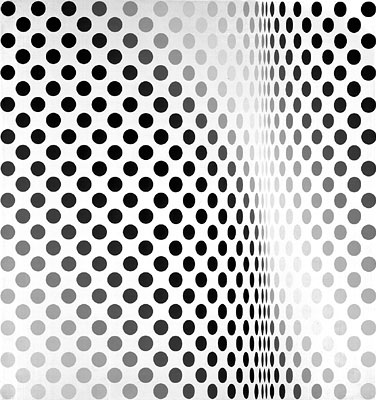
Pause, 1964
-
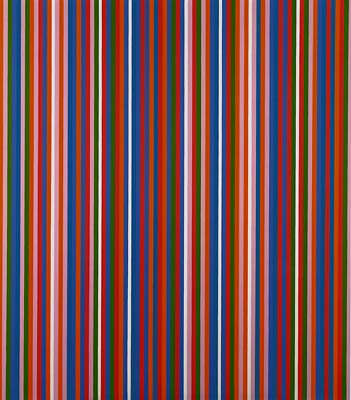
Blue Return, 1984
-
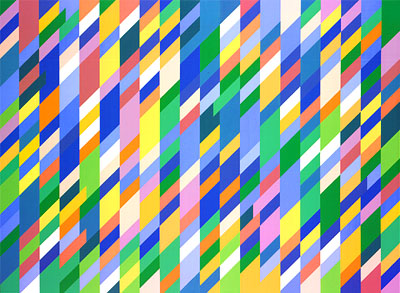
By Way of Yellow, 1993
-
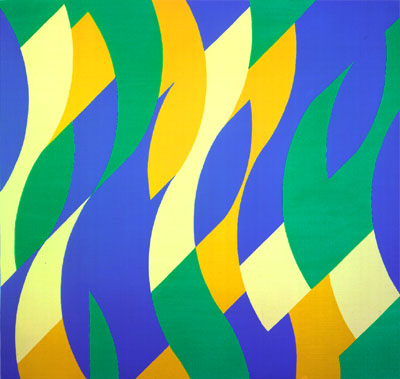
Rêve, 1999

